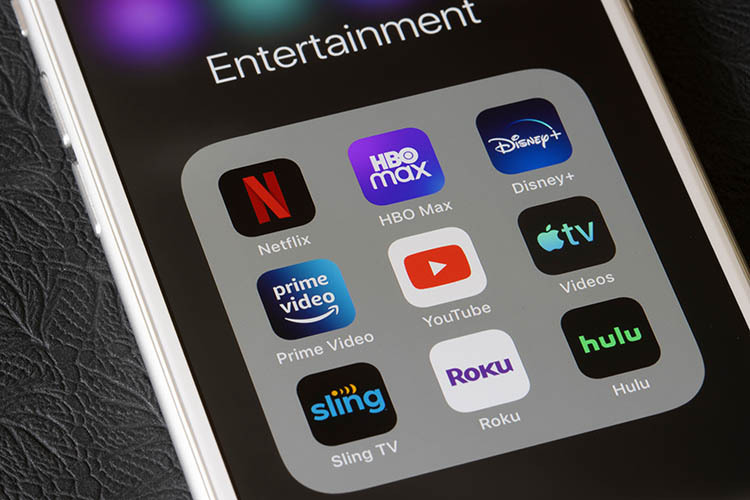OTT, which stands for over-the-top, is typically used in advertising to describe delivery over internet TV streaming services or devices. It’s “over-the-top” because it bypasses traditional cable and broadcast transmission in favor of an internet connection. OTT ads vary more in length and style than conventional TV commercials and come with some unique advantages for pharma and healthcare marketers. Trends in pharma marketing point to a shifting media mix that includes more emerging digital media like podcasts, internet radio, and yes—OTT streaming ads.

Here are some answers to frequently asked questions about OTT ads, plus insights on how this form of video advertising may fit into your pharma or healthcare marketing strategy:
How does OTT differ from traditional TV?
Because OTT advertising is delivered via TV streaming services or devices, ads may be viewed via smart TV, via apps on a streaming device like Roku or Amazon Fire TV, via apps on a smartphone or tablet, or via internet browsers. These ads can vary greatly in length, style, and functionality and provide greater flexibility than TV ad placements.
What are the advantages of OTT advertising in pharma?
Linear attribution is a clear advantage. Platforms for OTT advertising let you track activity – even across devices – so you can see whether someone watched your ad and then took action online. Attribution from cable and broadcast ads is tricky and largely relies on trends observed after the fact. In contrast, popular ROI measures like ROAS, CPV, and conversion rate are easy to track in real time with an OTT ad platform.
A huge boon to OTT advertising in pharma is the ability to finely target patients. With cable or broadcast, your only real targeting option is on the demographic level. Traditionally, you’d weigh channels, time slots, and programming content to hopefully reach a good chunk of your target audience. With many OTT platforms, you can target audience demographics directly.
Another advantage is the sheer variety of options you have – skippable, non-skippable, 5 seconds, 15 seconds, 30 seconds, longer deluxe placements, interactivity – the list goes on. There are ad options to fit diverse budgets and needs, which makes it easier to step away from formulaic commercial styles and make something that truly works for your brand. Coupled with the enhanced attribution ability noted above, that means OTT offers more opportunities to test the effectiveness of various ads and optimize ad yield over time.
How can OTT ads be an asset to a pharmaceutical or healthcare marketing strategy?
Reach is a major factor. According to Nielsen, streaming viewership overtook cable TV for the first time in July of 2022, representing 34.8% of television consumption.1 (To compare, cable took 34.4% and broadcast took 21.6%). Cable and broadcast still attract a significant amount of TV viewership, especially in certain demographics, but it’s clear that the Americans who watch streaming TV present an opportunity to marketers. Since many are “cord cutters” who watch no other form of TV at home, it may be the only way to target them with video. The possibility to reach audiences who don’t watch traditional TV – and target them with much finer precision, with the ability to track metrics effortlessly – can’t be ignored.
The pharma industry been recognizing the potential of OTT ads in recent years, ratcheting up budgets to incorporate more streaming TV ads. A recent Veeva advertising trends report saw streaming video gaining ground in the first half of 2022, accounting for 9.2% of the total marketing mix (a 1.1% YoY increase).2 The investment is paying off. Streaming video impressions were up 15% in the first half of 2022, with nearly a quarter of those executed programmatically.
Ease of formatting for regulatory compliance is another factor to consider. A 2022 analysis of streaming video’s potential from Laura Ohlsson, a pharmaceutical and healthcare consultant, touches on how digital video formats can actually support regulatory compliance thanks to their flexibility.3 These ads readily allow for inclusion of fair balance items like ISI and, in many cases, support direct links to additional drug and safety information to further inform the consumer. That makes the format relatively low-risk, compliance-wise.
Ready to see how the opportunity to reach more patients, target them more finely, and track key metrics with OTT can bolster your overall strategy? Get in touch so our experts can hook you up with the tools – and creative chops – to make streaming ads work for you.
References: